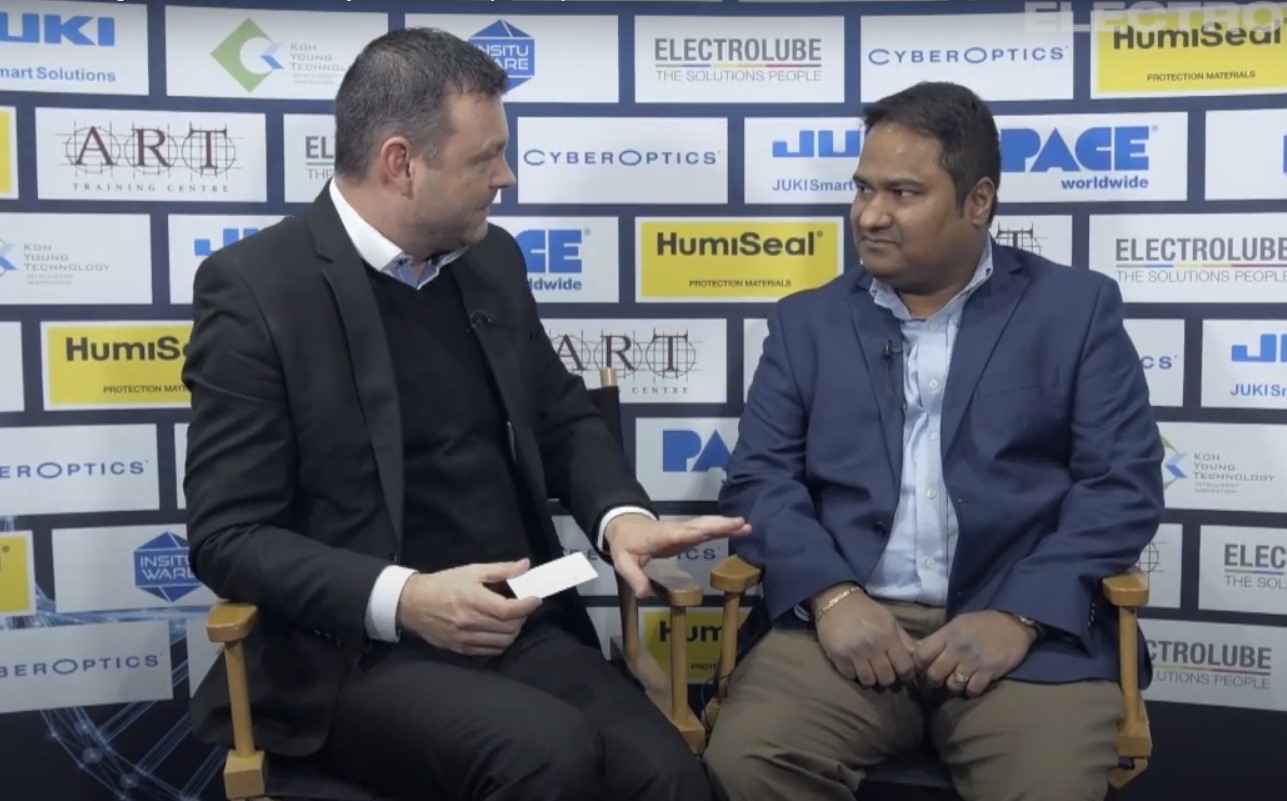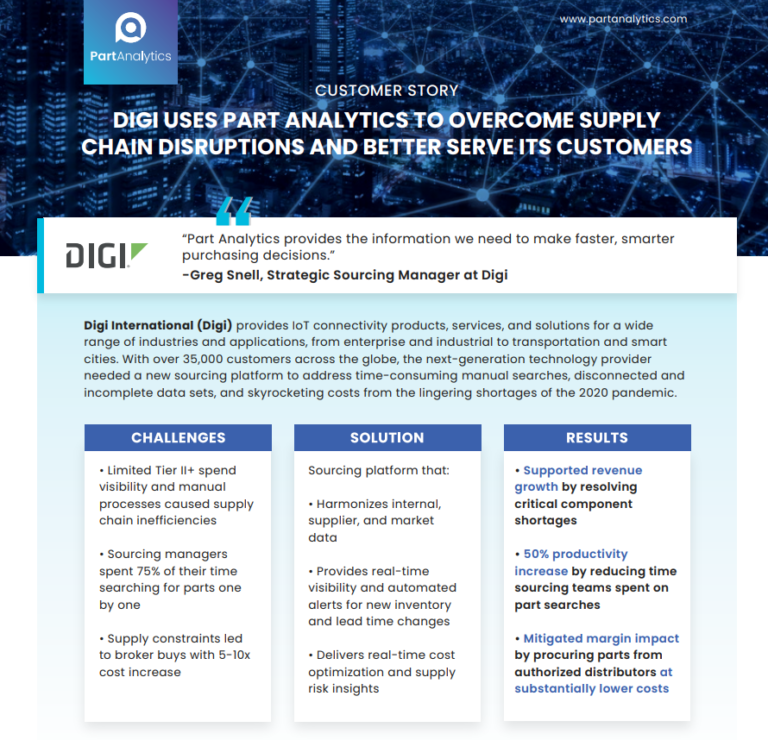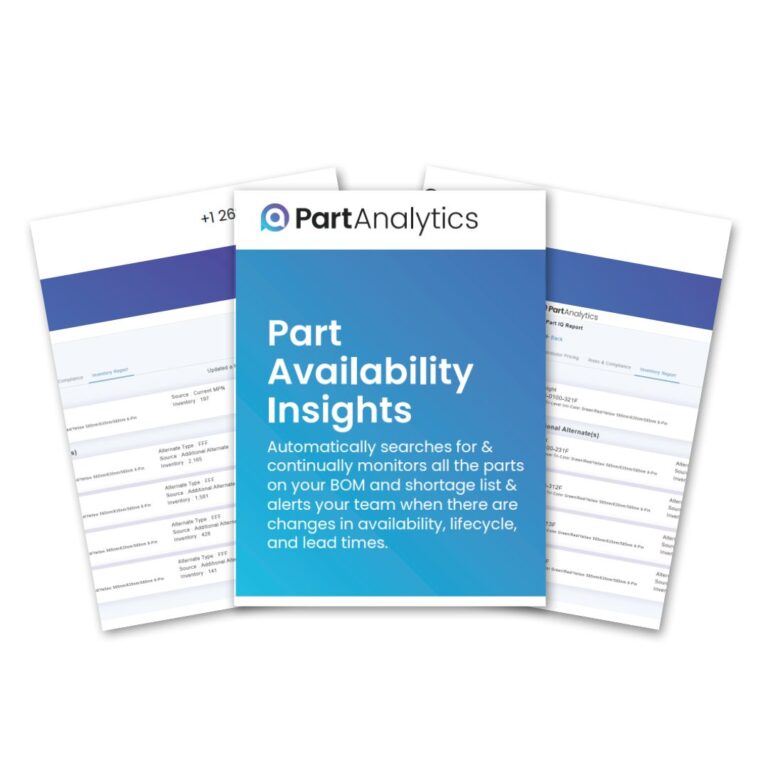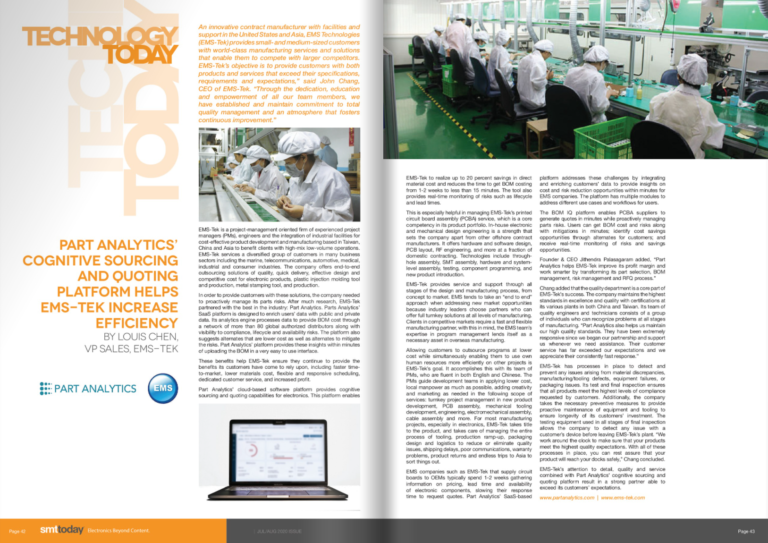
Part Analytics CEO (Jithendra Palasagaram) at IPC APEX Expo in San Diego in January 2020
You’re based in America. There’s a lot of activity going on in America. Just give us a feel and an overview of the type of trends you’re seeing or the demand that you’re seeing from the American electronics market.
First, thank you for the opportunity to talk today. Prior to starting Part Analytics, I worked with a large multinational corporation for a long time in sourcing and procurement. And from that experience and with the last two years with our company, Part Analytics, what we are seeing is our customers are demanding more digitization of manual processes on the supply chain side.
Supply chain, particularly in sourcing and procurement, has been one of the areas that’s kind of lagging in terms of digitizing the processes. And, once you do that, what do you do with all of the data? Generating better insights from the data, prescriptive insights, rather than just dumping a bunch of data on the users.
In addition to digitalization, using machine learning and artificial intelligence to generate insight that’s valuable and that can deliver business value to customers.
And that’s interesting because data is what’s driving progress more and more on a day-to-day basis. But as you say, data is also doubling, tripling, quadrupling in volume as well, and it’s the analysis that’s important. That’s not easy. How do you go about offering the translation of what data is?
I think domain expertise is important. You need to understand the customers/users and the KPIs or what’s important for them.
Traditionally, if you have more IT-focused solutions for data and services, they’re just analyzing bunch of data. What do we do with that data to make it more impactful for the users? You need to kind of understand what’s important for them. What KPIs are they driving toward and how do you deliver those results to them?
Especially around supply chain and procurement, you’re giving them an opportunity to go to their business leaders and say, “this is what we do. this how we deliver value to the business.” That’s important.
Where do you see the development going? Is data increasing and is it therefore becoming even more intelligent in that sort of answers you will be able to get?
Definitely. The first thing is digitalization of the processes and bringing all the data online from what’s now a traditional, manual process. But then once you do that, and you start gathering data from different customers and the network intelligence based off it.
How do you leverage the data across customers, across OEMs and EMS companies, to better give better insights to them about what’s going on? You want to give them opportunities to benchmark themselves against the industry standards, whether it’s on pricing or risk, newer component technology, or the option of new technology.
So, there is lot of growth in data, but making use of the network intelligence piece that’s really where we see it going.
Final question is really about a skill set because the industry can be quite traditional. There are a lot of older generations that know the current process just because they’ve been through it. Yet, in their factories and facilities, data is changing that. With that comes the need for a new skill set which a lot of us in this industry aren’t used to.
Are you finding that there is resistance from the established people rather than the younger generation? How do we change that and bring that young, data-driven generation into the industry?
We see that with trying to sell to some large OEM that have been kind of known to do things certain way and it’s very hard for them to change it. But, even for them there is talent that’s coming into their factories or their procurement or supply chain functions.
They’re millennials, and they used to kind of using all the digital technologies in their personal life. So, they’re asking:
- “Why can’t we do that same thing at work? “
- “Why do we need to do Excel spreadsheet? “
- “Why do we need to do this with a manual process? “
- “Why can’t we use our mobile phones to get all the insights I need in my hand, versus going into a laptop or a computer? “
So, there’s lot of push from them, but then there’s still a transition from traditional way of doing things to that. So, that must be hard for the people that have been doing things certain way for a long time. It’s more about educating them about the benefits and bringing them online in terms of the value that these tools can deliver for them.





